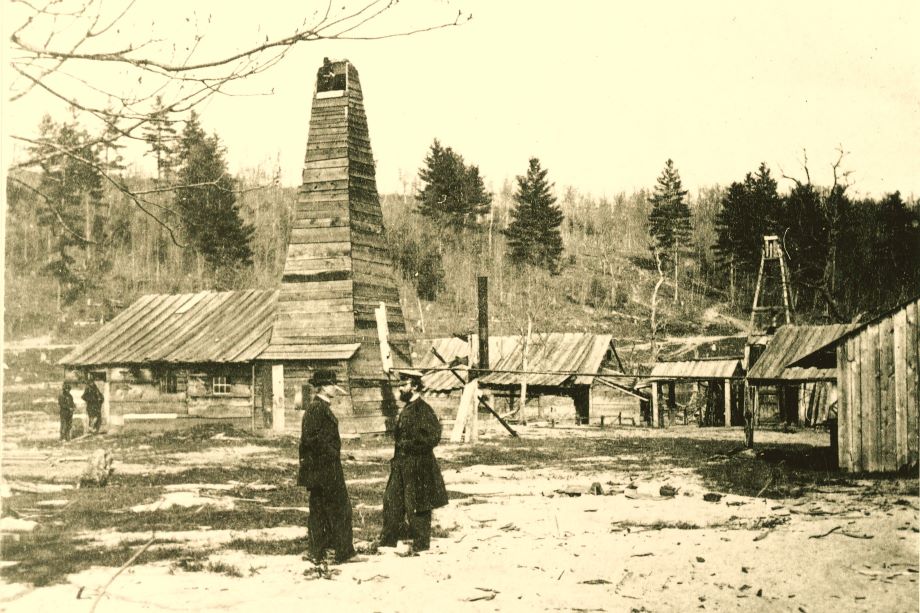Keith Roe Discusses the Transformation of ASME at the President’s Luncheon
Keith Roe Discusses the Transformation of ASME at the President’s Luncheon
Nov. 18, 2016
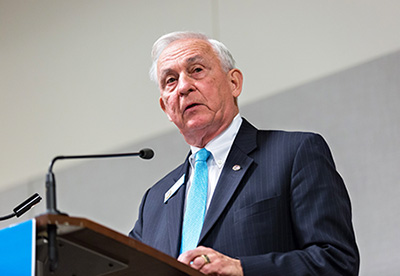
During his speech at the President’s Luncheon in Phoenix earlier this week, ASME President Keith Roe discussed the pivotal juncture the Society stands at today as it embarks on its new strategic path. He also reviewed the key steps ASME has taken in the past year to ensure its future greatness, including the selection of five technologies that will be the focus of forthcoming programs and products and the formation of four new Society task forces to support ASME’s strategic plan.
“It is a remarkable time in ASME, a time of incredible opportunity in a changing world,” Roe said toward the beginning of his address at the President’s Luncheon, which took place Nov. 14 during the ASME International Mechanical Engineering Congress and Exposition (IMECE). “We are witnessing a transformation of our Society as it reshapes itself to meet today’s challenges. The changes we see around us affect almost every aspect of our lives.”
Roe went on to highlight the difference between ordinary transition and the kind of game-changing transformation the Society is experiencing. “A transition will draw you a map to an expected destination, but a transformation puts you on a less clear path to a new, exciting destination,” Roe said. “A transition can lead to major shifts to a new set of opportunities; a transformation brings entirely new perspectives and a vision of a unified whole with limitless possibilities. In the end, transition tries to find a way through the chaos; transformation brings order to chaos.”
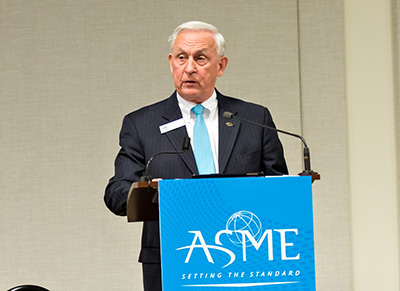
Roe laid out some of the key activities the Society has undertaken in recent months to pave the way for this ground-breaking transformation, beginning with the Board of Governors’ decision more than a year ago to approve a new technology-focused strategy for the future that is intended to establish ASME as the go-to organization — or “global technology hub,” as Roe called it — for critical mechanical engineering technologies.
The basis of the new strategy, which Roe said was intended to take ASME “from good to great,” was the selection of five technologies the Society would focus on when developing its portfolio of programs and products in the future. The five chosen technologies — manufacturing, clean energy, bioengineering, pressure technology and robotics — were approved by the Board of Governors in June after being identified by ASME staff and the newly formed Technology Advisory Panel from an original list of more than 2,000 individual technologies.
In addition to the five focus technologies, ASME identified eight enabling technologies that it considered highly important to innovation and the expansion of the Society: the Internet of Things, big data analytics, sustainability, artificial intelligence, cybersecurity, materials, nanotechnology and design engineering.
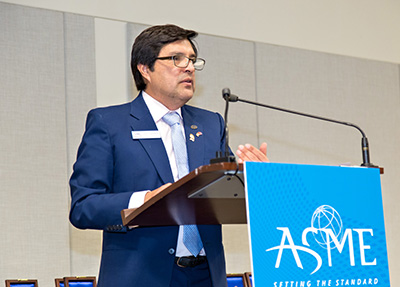
Roe also discussed the launching of four new Presidential and Sector Management Committee task forces that were formed to support the Society’s new strategy: the Task Force on Group Engagement and Alignment, chaired by Rick Marboe, vice president of the Technical Events and Content Sector; the Task Force for Increasing Industry Leadership Engagement in ASME, chaired by Stacey Swisher Harnetty, former Board of Governors member; the Task Force for Increasing Engagement of Student, Early Career and Digital Mechanical Engineers in ASME, chaired by ASME Past President Terry Shoup; and the Task Force on Strategy and Planning, chaired by John Goossen, Board of Governors member.
Toward the conclusion of his speech, Roe compared the transformational moment the Society is currently experiencing with a similar occasion more than a century ago when Frederick Winslow Taylor and other leaders of the Progressive Era introduced scientific management principles into manufacturing and business in an effort to improve industrial efficiency. Taylor, who served as president of the Society in 1906-1907, also brought change to ASME by encouraging the organization to become more expansive and accepting of new technologies and change within the engineering profession.
“Sound familiar? The key difference today is that we have a change in scope globally and our depth of knowledge positions us to make a substantial impact on many of the global challenges and opportunities we face,” Roe said. “So here it is: We can succeed if we step up to challenges ahead and own them. The potential for greatness has been part of ASME’s legacy as a professional society and engineering leader in the world. Today we re-claim that vision. This is where we stand to move the world.”
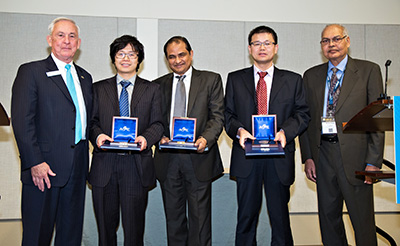
Concluding his speech, Roe thanked the ASME leaders he has worked with during the first six months of his presidency – including the BOG, the Executive Management Team and the Sector Management Committee – as well as Executive Director Thomas Loughlin and ASME staff for helping the organization take its first steps toward this new vision. He noted, however, that there was much more left to do.
“We need to keep our shoulders to the wheel as we continue to move ASME forward in this exciting transformation,” Roe said. “When 100 years from now the 22nd century leadership looks back at us, let them celebrate how we embraced a radically new vision of the future. Let them celebrate how we targeted cutting-edge technologies that changed everyday life, making the world a better and more caring place to live for all humankind.”
Prior to Roe’s speech, awards were presented to 17 engineering leaders during the luncheon, including Balakumar Balachandran, Xianbo Liu, Xinhua Long, Guang Meng and Nicholas Vlajic, the winners of the Melville Medal; Derek Bradley, recipient of the James Harry Potter Gold Medal; Inderjit Chopra, winner of the Spirit of St. Louis Medal; Sara Cosentino and Vittoria Verda, recipients of the Edward F. Obert Award; Patricia Davies, winner of the Per Bruel Gold Medal for Noise Control and Acoustics; and Isaac Elishakoff, recipient of the Worcester Reed Warner Medal.
The other honorees receiving awards at the luncheon were Bahram Khalighi, recipient of the Soichiro Honda Medal; Jyotirmoy Mazumder, winner of the M. Eugene Merchant Manufacturing Medal of ASME/SME; Adriano Sciacovelli, winner of the Edward F. Obert Award; Bruno Schiavello, recipient of the Henry R. Worthington Medal; Jerald L. Schnoor, winner of the Dixy Lee Ray Award; and Aldo Steinfeld, recipient of the Frank Kreith Energy Award.




